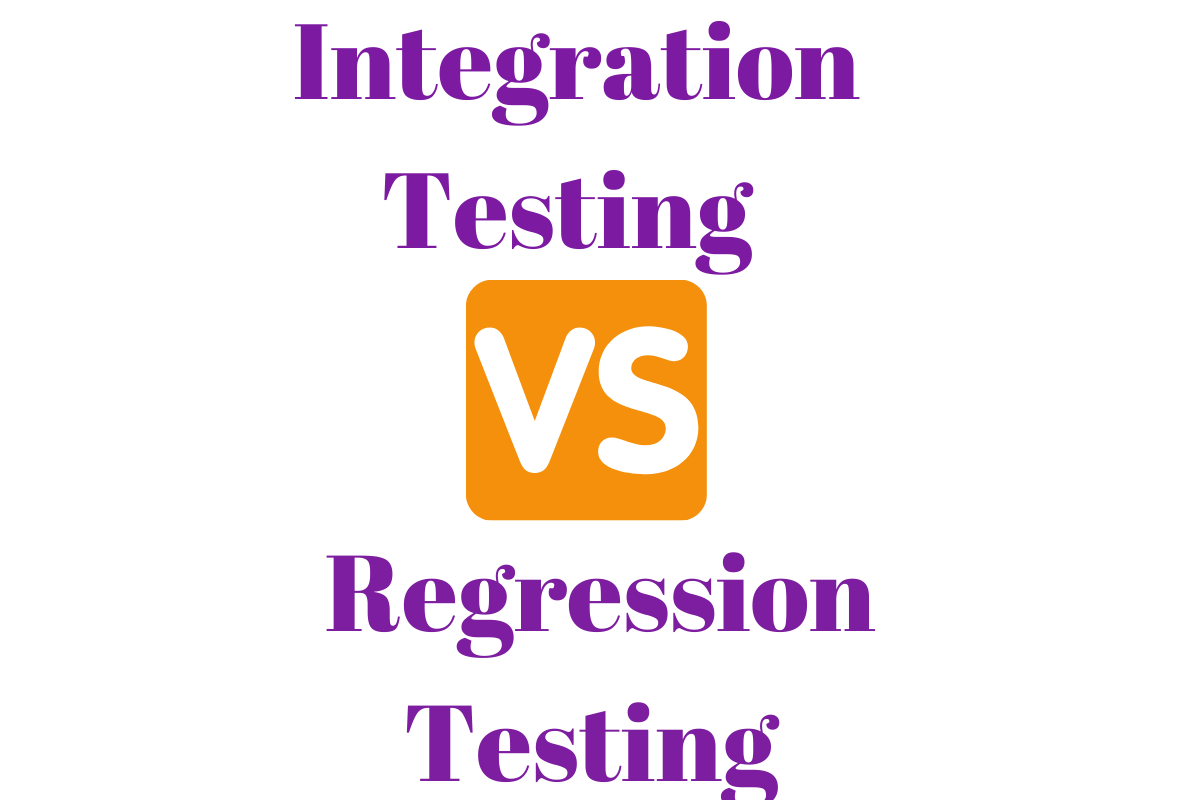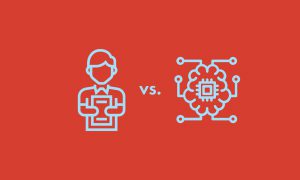If you are reading this article, It’s probably because you are wondering what is the difference between integration testing and regression testing, which are you going to perform, and why. In reality, it depends on the conditions for which the tests are prescribed.
For every modification made on any program’s code, no matter how insignificant it may seem, a regression test is absolutely necessary to make sure that the delivery remains top-notch and all prior functions are still in order.
Owing to the nature of the test type, suites are best taken automatically but also depending on the needs of that particular suite and how often requirement changes are made. One tool doesn’t fit all test suites, therefore, the choice of testing tools should be made with the nature of the test case in mind.
On the other hand, when integration testing is mentioned, the first thing to come to mind is the testing of two or more integrated features. Integration testing is a very crucial part of the testing life cycle of the software and makes it super easy to spot early defects and malfunctions in the build’s performance. This in turn saves a lot of time, effort, and cost that would rather be put to better use attending to the rest of the test cycle.
Let’s examine more differences between regression vs integration tests and see the several instances where it is better to go for regression testing services or use integration testing services.
A. Differences in Test Goals
Testing goals refer to a set of desired results that teams commit to achieving from testing. Below explains the goal differences between integration testing and regression testing.
Regression Testing
If asked to explain regression testing to a layman, its definition is partly in the name. Regression essentially means that something is returned to its previous state.
That said, regression testing is the test performed after modifications are made to any software code or structure. It’s done to make sure that the software in question is still functional like it was before the modified or new features were introduced.
Most times it’s just old test suits that are run to see if the application passes as it did before. Since this test type is similar to verification and mostly requires the test to be run over and over, it’s almost always automated.
Performing any repetitive test manually is not time or effort-friendly, especially if it can very well be automated. More so, this method of testing must not make use of any programming language before it is executable.
Integration Testing
Integration testing as a testing method can be easily defined to the average joe from its name. Integration, which is to put a few things together to become, or work as one.
Therefore integration testing would be to join various components as one and then test them as such to check how good their interaction is within the system.
This type of testing is usually undergone after the component testing is done and the individual units are all confirmed as passed.
The main function of this type of testing is to check the interdependency levels of the whole build and make sure it’s up to the standard of specifications.
B. Use of Automation Tools
Test automation involves the use of technology to monitor and control testing. The use of automation tools takes the place of human labor to save time, and effort, and considerably reduce the number of errors. Both regression and integration tests can be automated as nonfunctional tests.
Automated Regression Testing Tools
The preferred method of carrying out regression testing is usually using automated tools since it saves a lot of productive time and effort, even if it may be costlier. To find out more about automated regression testing, check this post.
Automated Integration Testing Tools
In the same way, automatically implementing integration testing through the use of tools makes the process a lot more painless.
C. Differences in How Regression Vs Integration Tests are performed
Every test method has peculiar steps to be taken to get the intended results. Let’s see how teams can execute regression correct tests and integration tests.
Regression Testing
The test suites are already available and the expected result to be achieved is known, it would be a lot more efficient to automate the test suites and the extent to which this automation continues depends on the number of test cases that will require this automation in the long run.
However, if the requirements change often along with the test suite, then automation won’t be the best bet, rather a waste of time and resources, to set up each suite for automation and run it only once or twice at the most.
It’s also important to note also that a great number of the tools used in regression testing are the “record and playback” types. A successful test suite is recorded while going through the AUT to make sure that the expected results are what is delivered.
AUT (Application Under Test)
Unless the automated tool being made use of is one that allows for easy updates or changes of test suites, it’s not advisable to use the automated tools for large tasks that require frequent changes and updates because it just ends up being a very tedious task for the tester.
Integration Testing
To begin the process on the right foot, the components are each tested separately and then immediately after, they are integrated gradually, starting with the components that work closely together and then further combinations until the whole lot is properly integrated and checked finally. This is a means to ensure that the interdependence works accurately down to the pairs.
Hence, the following practices are crucial to performing integration tests:
- Be aware of the software structure inside and out to the latter.
- Know all the units involved and their various functions.
- Get to understand how the information and data are shared between various units.
- Comprehend how information is replayed into and within the system, and how it’s accepted, and translated.
- To make the process easier, rig the application to suit your testing process, needs, and environment.
- Compose suitable and viable scenarios for the test.
- Take the steps gradually, without skipping any stage, and report every step accurately.
D. Time Difference between Integration and Regression Tests
When is it appropriate to perform either tests? Let’s see the different times suited for integration or regression testing.
Regression Testing
A system build will have a regression test performed on it, normally, immediately after the code structure is altered or replaced, no matter how small the alteration.
However, this test method is also applicable in other situations besides the aforementioned. Sometimes software may be released gradually and in steady batches.
When the situation is as such, the testing is done based on the release time frame put on the software by the development team, as soon as the functional testing is done then the regression test is taken up to get the product finally ready for release.
If the time frame spans a few months, this requires the test to be undergone on a daily basis for maximum efficiency and to keep in sync with the daily testing cycle already set in place.
Analyzing the medium of regression testing from a thorough angle, this testing method is a repeat of a test already performed. Simply put it’s also seen as a type of Retest.
Here’s a typical instance of Retest; Let’s say a test was underway, and for some reason, before completion, the procedure was halted, but not concluded, to be continued the following day.
When the tester returns to continue testing the following day, mostly for formalities sake, they perform the test afresh. This scenario is what is called a Retest since the test suite is simply repeated not to cross-check functionality but to verify prior results.
On the other hand, regression testing in its totality is simply a Retest procedure that is only restricted to specific situations, when the basic coding architecture that affects the general functionality of the application has been altered or completely replaced.
There are a few popular reasons why a team would decide to go on with this method of testing; After an error in the code has been successfully snuffed out, After the new variation of a code is integrated and used in the stead of an obsolete one, this is often as a result of having a broader spectrum of requirements.
Integration Testing
Although it’s evident that this testing is important, and would likewise require some inherent expertise in the field, one may still ask if there are any reasons for integration testing in the life cycle and development of system builds…well, let’s look at some;
1. Usually, the full application build isn’t assigned to, and completed by only one developer. The process of software development is normally a joint effort, having different teams of developers working on the different units one at a time.
Owing to this, it’s important to cross-check the work done by each team both separately and when paired with other units to ensure that the requirements and functions were met to the latter.
2. When data is transferred or moved between units, it tends to change the form, and as a result, it could possibly affect the whole program which would then require an integration test to avoid any lurking issues from lingering.
3. In the case of having the units communicate and integrate with external tools and API then they will also need to undergo testing to ensure that feedback is on point and no strange or unwanted data is accepted in the process.
4. This process is crucial in the case of having requirements change when the product development is underway. This is a prevalent instance, and more often than not, the software is deployed without performing the system test; therefore the integration test becomes very useful.
E. Advantages of Regression Testing Vs Integration Testing
What are the benefits of conducting these tests? In other words, what value do they confer to your software or business?
Regression Testing
1. It helps in promoting the overall product outlook.
2. Its main purpose is to make sure that code modifications and bug fixes after they are implemented, don’t leave an adverse effect on the rest of the product build.
3. This testing method can be automated to save time and effort.
4. It ensures that issues don’t resurface after they’ve been dealt with.
Integration Testing
Among the numerous advantages and besides the fact that this test is very crucial and unavoidable, a few of the advantages are as follows;
1. First of all, and most importantly, this testing is a means to ensure that all the units function properly when put together which is the whole point of any software build.
2. There are replacement options for unavailable units while testing, using stubs or drivers instead. For this reason, the test only needs the primary units, and not every other part, to be available and good to go.
3. Along with the requirements set by the client, some presumptions, made by the team during the development phase, about the functionalities of the integrated parts will need to be confirmed as up to standard. This happens with the integration test.
F. Challenges of Regression Testing Vs Integration Testing
It’s normal for QA teams to experience some bottlenecks that may stop testing from progressing. That said, understanding the challenges ahead of testing helps them to also prepare some solutions before they happen. Here are possible setbacks to watch out for.
Regression Testing
1. No matter how minute the modification on the code is, the Regression test must take place to ensure of seamless function, because every programmer knows that even an insignificant change in the code is capable of causing a greater error in the rest of the application.
2. In the case of doing a regression test manually, perhaps due to the frequent changes in requirements or any other reason, the process can prove overly tedious, time, and effort consuming especially when there is a mountain of test cases to run.
Integration Testing
The integration testing process has its general advantages as well as a few challenges that could be somewhat of a lag to the whole procedure.
1. Since the whole purpose of this test is to ensure that the units work seamlessly both individually and as a group, it is also important to make sure of the environment for the test and this means further extensive and exhaustive tests to be conducted and probably using more intricate methods.
2. As a result of the factors mentioned and a couple more like, database, platform, and the rest, managing the process of the integration testing becomes more complex.
3. It also demands a ton of modifications and testing efforts to integrate any new or legacy systems together, especially when the units were built by different companies, and most likely not built with any intentions of having a rival company product integrated with it. Having a positive outcome from the integration and feedback is still not sure even if they are eventually combined.
G. Entry and Exit Prerequisites for Both Tests
Let’s go over some entry and exit prerequisites to better understand the difference between integration and regression testing.
Regression Testing
1. Entry Prerequisites:
All modifications and added features to the coding structure should be marked as completed and the Test plan also was given the go-ahead before commencement.
2. Exit Prerequisites:
- The full test plan should have been completed, and any issues encountered during the test should be taken care of and solved completely.
- The Test report should be readily available and also state every stage of the procedure.
Integration Testing
1. Entry Prerequisites :
1. Correct documentation of the testing procedure should have been commissioned and approved.
2. Test suits and data already created and ready to be used.
3. Make sure that the individual units are all tested and reported ready for use.
4. Be sure to treat all defects and issues of a critical nature.
5. Be sure that the environment is properly aligned for the test.
2. Exit Prerequisite:
1. Make sure that all test suits are reported as passed and completed.
2. Make sure to treat all defects and issues of critical nature
3. The final test report will have been documented and approved.
Summary of Differences between the Integration Test and Regression Test
To conclude the differences between integration testing and regression testing, let’s quickly recap the keynotes.
An integration test is always performed after the unit test is completed on the software. A regression test is performed after any alteration in the former code structure of the software.
Integration Testing is performed to check the effective functionality of the units between each other. Regression Testing is done to check if old bugs have been reintroduced to the system after code modifications take place.
Integration Testing is normally done before the initial deployment of the application. Regression Testing takes place in every stage and can be done before or after the initial deployment, depending on when the changes are made.
Now that you understand the differences between regression vs. integration tests, you might want to learn about some test automation strategies that will help in automating these tests.









